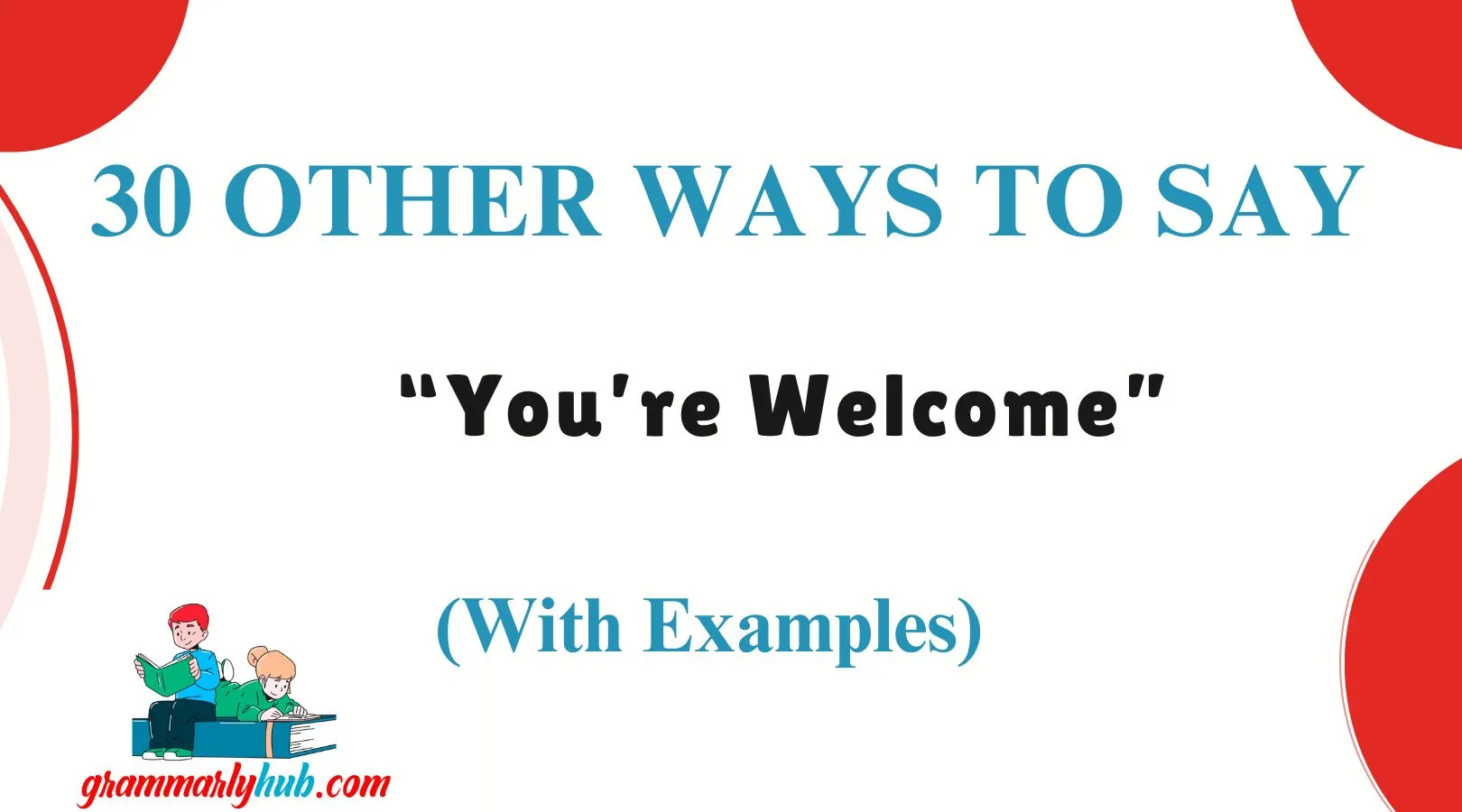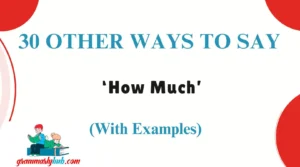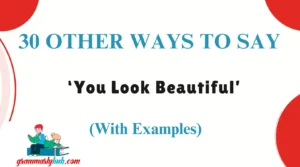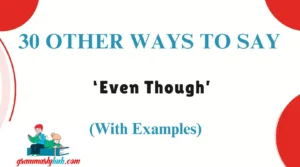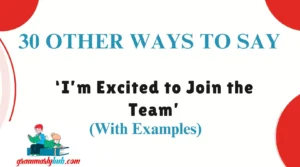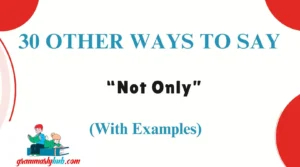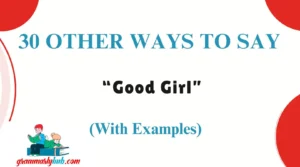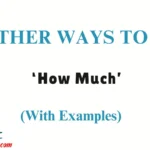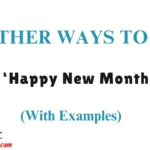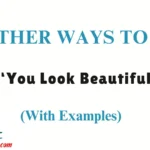Looking for other ways to say “you’re welcome” that feel more sincere, professional, or casual? Whether you’re responding to a compliment, a thank-you email, or a kind gesture, it helps to have a variety of responses ready. This guide explores alternative ways to say “you’re welcome” in different contexts—whether you’re at work, texting a friend, or having a heartfelt conversation.
Using the right phrase not only enhances your communication but also adds warmth and personality to your replies. There are countless other ways to say “you’re welcome” that suit both formal and informal situations.
By expanding your vocabulary, you can sound more thoughtful and engaging. Keep reading to discover the best other ways to say “you’re welcome” that you can start using today to keep your conversations natural, friendly, and meaningful.
What Does “You’re Welcome” Mean?
“You’re welcome” is a polite and conventional response to “thank you.” It signifies that the act of kindness, help, or service you provided was willingly offered, and that the recipient doesn’t need to feel indebted.
When to Use “You’re Welcome”
This phrase is appropriate in nearly all situations where someone has expressed gratitude. Whether it’s in a formal setting, a friendly exchange, or even a professional email, “you’re welcome” works because it’s versatile, courteous, and expected in many cultures.
Is It Professional/Polite to Say “You’re Welcome”?
Absolutely. “You’re welcome” is both professional and polite, making it a safe and acceptable choice in most contexts. However, depending on your tone or the situation, switching it up with a more personal or expressive response can be even more impactful.
Pros and Cons of “You’re Welcome”
Pros:
- Universally understood and polite.
- Works in both formal and informal contexts.
- Maintains professionalism in workplace settings.
Cons:
- Can sound automatic or emotionless if overused.
- Lacks emotional depth in certain heartfelt exchanges.
Synonyms For “You’re Welcome”
- My pleasure
- No problem
- Don’t mention it
- It was nothing
- Not at all
- Glad to help
- You bet
- No worries
- Of course
- Absolutely
- Happy to help
- You got it
- Anytime at all
- I’ve got your back
- It’s the least I could do
- Sure
- That’s what I’m here for
- Always
- Consider it done
- With pleasure
- Just doing my job
- No trouble at all
- Think nothing of it
- Nothing to it
- At your service
- It was my honor
- I’m here for you
- De nada (Spanish)
- You’re most welcome
- You bet
1. My Pleasure
Definition: A gracious response indicating that you were glad to help.
Explanation: Often used in customer service, but also perfect in professional or polite settings.
Example: Thanks for helping me out today! —My pleasure!
Worst Use: Casual settings where it might sound too formal or rehearsed.
Tone: Professional, warm, service-oriented.
2. Anytime
Definition: Suggests that you’d be willing to help again, no matter when.
Explanation: Great for informal settings with friends, coworkers, or peers.
Example: Thanks for grabbing lunch for me! —Anytime!
Worst Use: In formal emails or conversations where it may come off as too casual.
Tone: Friendly, casual, approachable.
3. Don’t Mention It
Definition: Downplays the gesture, implying it was no trouble at all.
Explanation: Shows humility, often used in casual or humble exchanges.
Example: Thank you so much for your help with the report. —Don’t mention it.
Worst Use: In very formal conversations where humility might be misunderstood.
Tone: Humble, casual, laid-back.
4. Of Course
Definition: Indicates that helping was obvious or expected.
Explanation: It’s often used when the help was natural and no thanks were necessary.
Example: Thanks for staying late to help me finish this. —Of course!
Worst Use: When the situation required effort or going above and beyond—may seem dismissive.
Tone: Supportive, casual, natural.
5. No Problem
Definition: A relaxed way of saying the help was no burden.
Explanation: Common among friends or younger people, it shows ease in giving help.
Example: Thanks for the ride! —No problem!
Worst Use: In formal or corporate settings where it may seem too informal or imply that a “problem” existed.
Tone: Easygoing, modern, friendly.
6. Sure Thing
Definition: A more playful or colloquial way of confirming the favor was no big deal.
Explanation: Often used in casual conversations, especially when the favor was small.
Example: Could you grab that for me? Thanks! —Sure thing!
Worst Use: Emails or professional environments—it may sound unprofessional.
Tone: Light, friendly, casual.
7. Absolutely
Definition: An enthusiastic affirmation that helping was without hesitation.
Explanation: Adds a sense of positivity and readiness.
Example: Thanks for jumping in to help during the event. —Absolutely!
Worst Use: May sound too strong for minor or repetitive situations.
Tone: Positive, assertive, enthusiastic.
8. It Was Nothing
Definition: A humble way to dismiss the favor as no big deal.
Explanation: Indicates modesty and downplays the action.
Example: Thanks for lending a hand. —It was nothing!
Worst Use: When you actually did a lot—could come across as disingenuous.
Tone: Humble, polite, soft-spoken.
9. Glad I Could Help
Definition: Expresses genuine satisfaction in being useful.
Explanation: Great for team settings, and when offering encouragement or reassurance.
Example: Thanks for solving that tech issue. —Glad I could help!
Worst Use: In overly formal writing—may sound too casual.
Tone: Warm, genuine, helpful.
10. No Worries
Definition: A relaxed way to say the favor didn’t bother you.
Explanation: Used commonly in Australian and UK English, also informal in the U.S.
Example: Thanks for your patience! —No worries!
Worst Use: Corporate communication—it may sound dismissive.
Tone: Relaxed, cool, friendly.
11. Happy to Help
Definition: Expresses that you were genuinely glad to assist.
Explanation: This is a warm and sincere phrase, perfect for professional or personal exchanges where you want to show both kindness and capability.
Example: Thanks for walking me through the process. —Happy to help!
Worst Use: May sound too soft in very high-level corporate or legal discussions.
Tone: Helpful, cheerful, reassuring.
12. You Got It
Definition: A confident and enthusiastic way to say “no problem”.
Explanation: Very casual and upbeat, often used in team environments or among friends.
Example: Could you email that file over? Thanks! —You got it!
Worst Use: In formal or client-facing communication.
Tone: Playful, positive, laid-back.
13. Anytime at All
Definition: Indicates complete availability and openness to help again.
Explanation: A step up from “anytime,” this phrase feels more heartfelt and intentional.
Example: Thanks for always being there for me. —Anytime at all.
Worst Use: Can sound overly dramatic in simple, everyday exchanges.
Tone: Warm, supportive, generous.
14. I’ve Got Your Back
Definition: Reassures the person that you’ll continue supporting them.
Explanation: Used best in trusted, supportive relationships, such as friends, coworkers, or teammates.
Example: Thanks for covering for me at the meeting. —I’ve got your back.
Worst Use: Too informal or intimate for clients or executive conversations.
Tone: Loyal, reassuring, friendly.
15. It’s the Least I Could Do
Definition: Expresses humility by suggesting that your help was minimal compared to what the person deserved.
Explanation: Works best when someone shows deep appreciation, and you want to downplay your role modestly.
Example: Thank you for being there during my surgery. —It’s the least I could do.
Worst Use: When the favor was genuinely small—it might sound sarcastic.
Tone: Humble, gracious, empathetic.
16. Sure
Definition: A quick, casual affirmation that the help was given willingly.
Explanation: This works well in brief, informal exchanges.
Example: Thanks for doing that. —Sure!
Worst Use: In written business communication—it can seem too short or dismissive.
Tone: Casual, easygoing, neutral.
17. That’s What I’m Here For
Definition: Suggests that helping is part of your role or purpose.
Explanation: This phrase is especially effective in customer service or team support roles.
Example: Thank you for clarifying that. —That’s what I’m here for.
Worst Use: In personal relationships where it might sound too impersonal or duty-bound.
Tone: Professional, service-minded, dependable.
18. Always
Definition: A brief, heartfelt way to say you’ll always be there.
Explanation: Often used in intimate or close relationships—it carries emotional weight.
Example: Thanks for picking up the phone late last night. —Always.
Worst Use: In work settings where it could be misread or lack clarity.
Tone: Deep, emotional, devoted.
19. Consider It Done
Definition: Implies the favor was so easy, it’s as good as complete.
Explanation: This phrase works well in efficient, action-oriented settings.
Example: Thanks in advance for handling this for me. —Consider it done.
Worst Use: When you haven’t actually completed the task—it could cause confusion.
Tone: Proactive, confident, supportive.
20. With Pleasure
Definition: Indicates that it brought you joy to help.
Explanation: Similar to “my pleasure,” but slightly more elegant or personal.
Example: Thank you for your insights during the meeting. —With pleasure.
Worst Use: In very casual or rushed conversations—it might feel out of place.
Tone: Polite, gracious, refined.
21. Just Doing My Job
Definition: Emphasizes that the help was part of your responsibility.
Explanation: Often used in professional settings, especially when someone over-thanks you.
Example: Thanks for following up so quickly. —Just doing my job.
Worst Use: When you want to convey genuine warmth or personal care—it can sound cold.
Tone: Neutral, duty-bound, professional.
22. No Trouble at All
Definition: Reinforces that helping was effortless and no inconvenience.
Explanation: Slightly more formal than “no problem,” it works in work and social environments.
Example: Thanks again for driving me home. —No trouble at all.
Worst Use: Overused in overly polite exchanges—it may feel stiff.
Tone: Warm, polite, reassuring.
23. Think Nothing of It
Definition: Another modest response that minimizes the importance of the favor.
Explanation: Often used in British English or more traditional conversation styles.
Example: I really appreciate your help. —Think nothing of it.
Worst Use: May sound outdated or too formal in modern, casual settings.
Tone: Humble, old-fashioned, polite.
24. Nothing to It
Definition: Emphasizes the ease with which the help was given.
Explanation: Suggests that the action took no real effort, and you were happy to do it.
Example: Thanks for sorting this out so quickly. —Nothing to it.
Worst Use: When the task was actually difficult—it could come off as insincere.
Tone: Light, casual, friendly.
25. At Your Service
Definition: Formal and slightly dramatic, but shows readiness to help.
Explanation: Often used in hospitality or high-end service roles, but can be playful among friends too.
Example: Thanks for arranging that for me! —At your service.
Worst Use: Over-the-top in casual emails or texts.
Tone: Polished, service-oriented, charming.
26. It Was My Honor
Definition: Signifies deep gratitude and pride in having helped.
Explanation: This phrase adds a layer of sincerity and reverence—ideal for meaningful moments.
Example: Thanks for being there during our big day. —It was my honor.
Worst Use: For everyday favors—it could sound too dramatic.
Tone: Formal, respectful, heartfelt.
27. I’m Here for You
Definition: Shows that you’re a consistent source of support.
Explanation: Ideal in emotional or supportive relationships, offering more than just a one-time response.
Example: Thanks for listening tonight. —I’m here for you.
Worst Use: Professional settings—could feel too personal.
Tone: Empathetic, caring, reassuring.
28. De Nada (Spanish)
Definition: A casual way to say “you’re welcome” in Spanish, meaning “it’s nothing.”
Explanation: Often used in bilingual or multicultural environments.
Example: Gracias por ayudarme. —De nada!
Worst Use: In fully English settings with people unfamiliar with the phrase.
Tone: Casual, cultural, friendly.
29. You’re Most Welcome
Definition: A slightly more formal version of “you’re welcome.”
Explanation: Adds emphasis and politeness, useful in customer service or formal writing.
Example: Thank you for your kind assistance. —You’re most welcome.
Worst Use: Overuse could make it seem old-fashioned.
Tone: Elegant, polished, courteous.
30. You Bet
Definition: A confident and casual way to affirm you were happy to help.
Explanation: Common in North American English, especially the Midwest.
Example: Thanks again for doing that. —You bet!
Worst Use: In international or formal settings—it may be misunderstood.
Tone: Cheerful, casual, affirmative.
Conclusion
Knowing the right way to respond to “thank you” isn’t just about good manners—it’s about showing people they matter. Whether you’re expressing humility, confidence, professionalism, or warmth, these 30 alternatives to “you’re welcome” help make your responses more engaging and meaningful. Rotate them into your conversations, and you’ll find your words not only sound more natural but also foster deeper connections—one kind exchange at a time.
FAQs:
1. What do I say instead of “You’re welcome”?
You can say “No problem,” “My pleasure,” or “Anytime” to keep it casual and friendly. These alternatives still express gratitude and politeness without sounding too formal.
2. How do you say you’re welcome in a unique way?
Try “Happy to help,” “Glad I could assist,” or “It was nothing.” These unique responses show personality and sincerity while acknowledging the thanks.
3. How do you respond to thank you?
Respond with phrases like “Of course,” “You got it,” or “Don’t mention it.” Your tone should match the setting—professional, casual, or warm.
4. What other word can I use instead of welcome?
Words like “anytime,” “sure,” “certainly,” or “gladly” work as alternatives. Each adds a slightly different tone, from formal to relaxed.
5. What is the best reply for you’re welcome?
The best reply depends on context—“My pleasure” works great professionally, while “No worries” fits casual chats. Choose what feels genuine to you.
6. What is warm welcome?

Welcome to GrammarlyHub, your trusted resource for writing clarity, grammar insights, and language tools. Founded by Mia Rose, a passionate writer and language enthusiast, GrammarlyHub is dedicated to helping students, professionals, and creatives write with confidence and precision.
